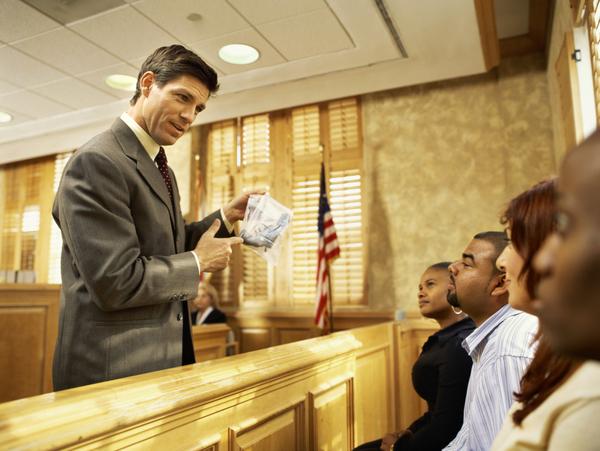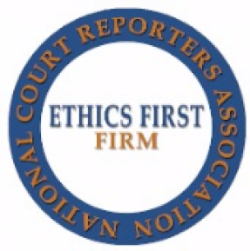Effective advocacy often depends on well-prepared trial presentations that simplify arguments.
Effective advocacy often depends on well-prepared trial presentations that simplify arguments.
Blog Article
Exactly How Trial Presentations Enhance Your Disagreement and Convince Jurors
Test discussions act as a critical system for improving legal arguments and persuading jurors. By integrating visual aids, narrative frameworks, and psychological involvement, lawyers can develop a compelling case that resonates on numerous degrees. The calculated usage of visuals not only clarifies complex information yet additionally records jurors' interest better than words alone. The art of narration plays a just as important function in transforming valid evidence right into an engaging narrative, forming jurors' understandings. Comprehending these elements can significantly influence trial end results, increasing the question of just how each element contributes to this complex dynamic.

Importance of Aesthetic Help
Visual aids play a critical duty in improving the efficiency of trial discussions, as they can substantially enhance audience involvement and retention of info. In the context of a trial, where jurors are entrusted with handling facility details, aesthetic aids offer to simplify and make clear bottom lines. Graphes, graphs, and photos can share data and concepts that may otherwise bewilder or confuse jurors, permitting for a much more straightforward understanding of the proof presented.
Additionally, visual aids aid in maintaining juror focus throughout the proceedings. By breaking the dullness of verbal statement, these devices can punctuate crucial debates, making them more unforgettable. Effective visual help can also evoke psychological reactions, which can be crucial in persuading jurors to line up with the speaker's narrative.

Crafting Engaging Narratives
A compelling story is crucial in test discussions, as it serves as the backbone of reliable persuasion. It enables lawyers to weave with each other facts, proof, and psychological elements into a meaningful tale that resonates with jurors. This narrative structure makes it possible for jurors to understand the complexities of the situation while leading them through the attorney's disagreement.
To craft an engaging narrative, attorneys must concentrate on clarity and coherence. This entails developing a clear protagonist-- typically the customer-- and detailing their trip through the events concerned. Providing the realities in a sensible series enhances comprehension and preserves involvement. In addition, making use of vibrant summaries can develop psychological photos that aid jurors visualize the events, making the narrative much more memorable.
In addition, incorporating crucial styles throughout the presentation strengthens the core message and aids in retention - trial presentations. The narrative needs to not just convey information but additionally stimulate a sense of justice, highlighting the stakes involved. Inevitably, a sound narrative fosters a connection in between the jurors and the instance, positioning the attorney's argument as both credible and engaging, consequently boosting the possibility of a beneficial verdict

Involving the Jury Emotionally
Reliable jury involvement hinges on see it here the attorney's capacity to link with jurors on an emotional degree. This connection can significantly affect jurors' understandings and their ultimate decision-making. Using emotional charms allows lawyers to humanize the case, changing abstract legal principles into relatable experiences. By providing real-life stories or endorsements, attorneys can stimulate empathy and empathy, cultivating a deeper understanding of the concerns at stake.
Visual aids, such as pictures or videos, can additionally boost emotional interaction, supplying jurors with vivid representations of the situation's human components. Crafting a narrative that highlights the struggles and victories of the people entailed guarantees that jurors see past the legal arguments and acknowledge the human consequences of their decisions.
Additionally, tone and body movement play an Visit This Link important duty in sharing emotion. An attorney's passionate delivery can resonate with jurors, strengthening their psychological financial investment in the event. It's important to balance sob stories with accurate proof, making certain that jurors really feel compelled to act while remaining grounded in the truth. Ultimately, an emotionally engaged court is most likely to be persuaded, making emotional link a vital part of reliable test discussions.
Structuring Your Presentation

The body of the presentation should be practically fractional into bottom lines, each supported by compelling evidence. It is advantageous to make use of narration techniques to weave facts right into a narrative that jurors can conveniently adhere to. Aesthetic aids, such as graphes and video clips, can improve comprehension and engagement, aiding to highlight essential items of evidence.
Real-World Case Research Studies
Analyzing real-world instance research studies offers invaluable understandings right into the art of trial discussions and persuasion. For instance, the spots instance of "O.J. Simpson v. Individuals of California" illustrates exactly how visual aids and engaging narratives can persuade court perceptions. The protection team properly utilized an approach that combined prominent specialist testimonies with multimedia discussions, which astounded jurors and ultimately influenced their choice.
One more noteworthy instance is the "McDonald's Coffee Instance," where the complainant's lawyers made use of graphic pictures of the injuries endured by Stella Liebeck. check my blog trial presentations. This raw aesthetic evidence played a critical duty in conveying the seriousness of her burns, causing a substantial court award. Such situations show that impactful test presentations commonly depend upon the effective integration of visuals and storytelling to evoke emotional reactions from jurors
Moreover, the "Casey Anthony Test" highlighted the relevance of narrative comprehensibility and trustworthiness. The prosecution's failing to establish a compelling timeline diminished their convincing power, underscoring the requirement of a well-structured presentation. Evaluating these cases reveals that effective test discussions need tactical planning, psychological interaction, and the capability to resonate with jurors' values and ideas.
Final Thought
Trial presentations significantly boost disagreements and convince jurors through the critical use visual aids, engaging narratives, and psychological involvement. By streamlining complicated information and cultivating links with the audience, these components produce a memorable and impactful experience. A well-structured discussion balances psychological allures with accurate proof, eventually resonating with jurors' worths. The combination of these strategies not only influences decision-making yet likewise emphasizes the value of effective interaction in the court.
Report this page